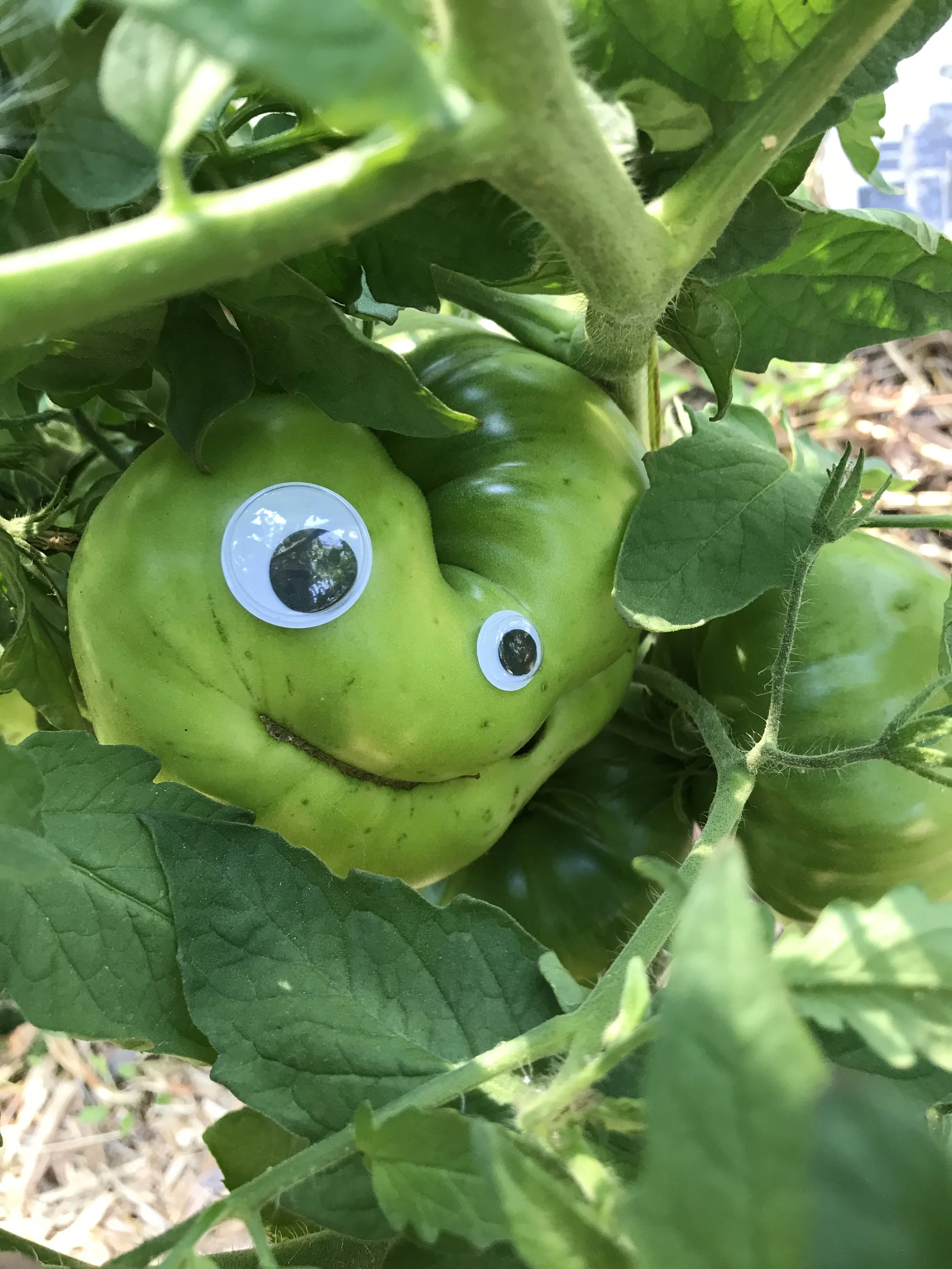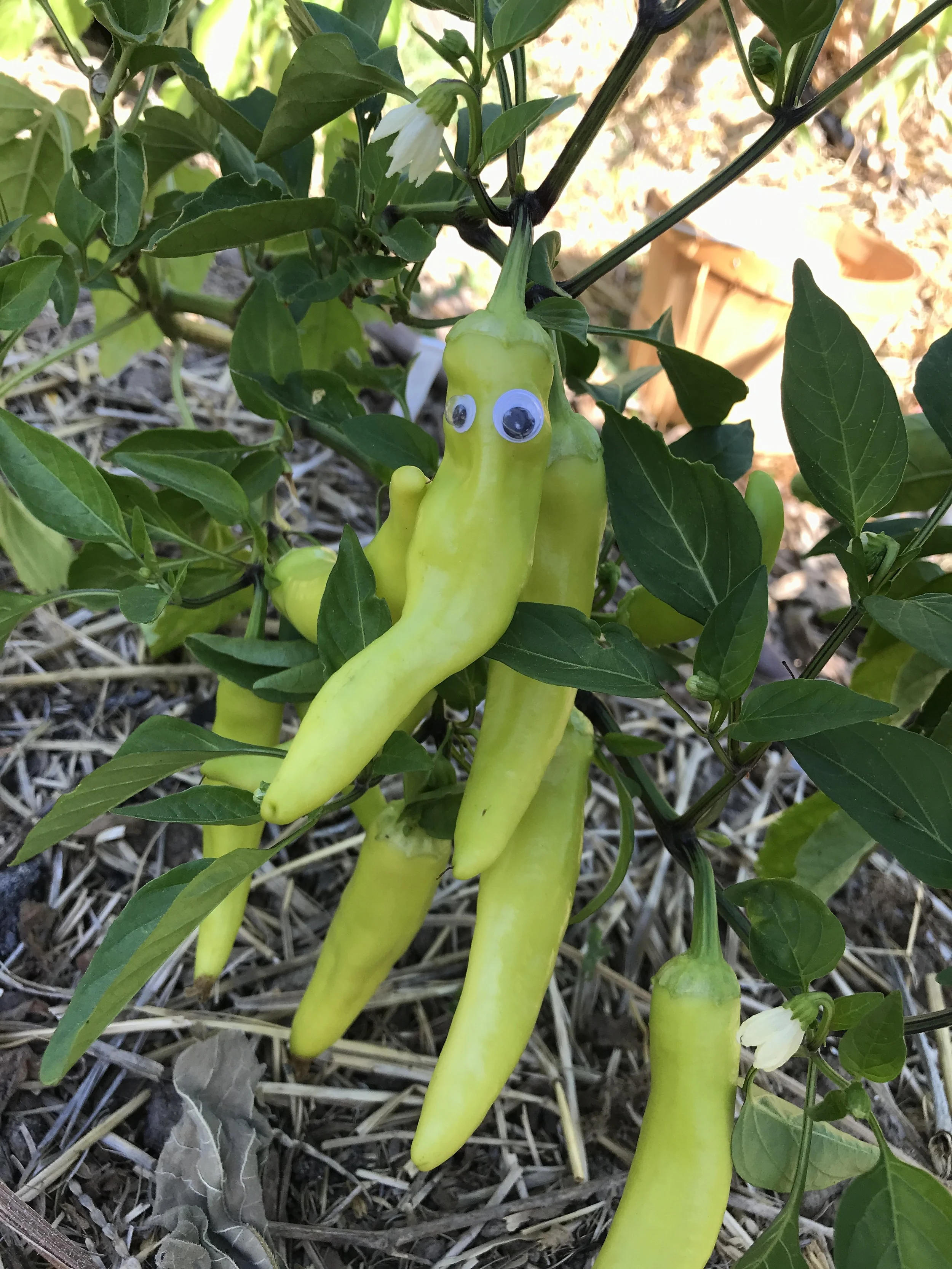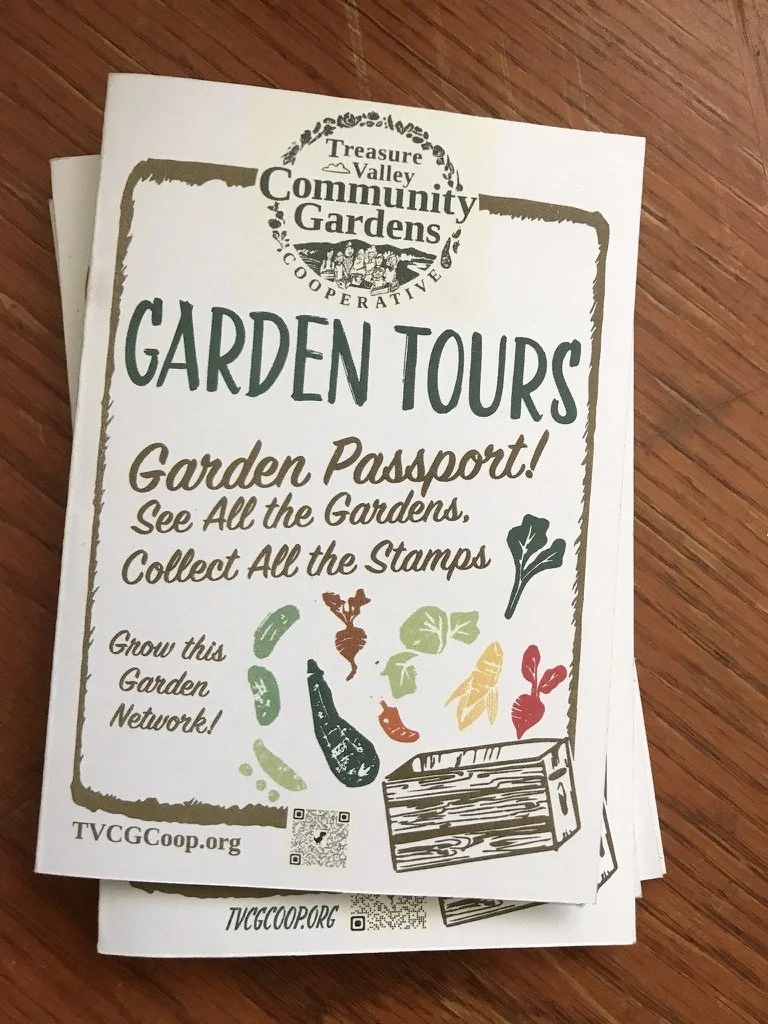Googly Eyes, Missing Tomatoes, & Stories We Tell About Sharing
I recently had a conversation with a passerby who noticed me hanging up a makeshift security sign. We’d just had some tomatoes go missing from the Grow More Good Community Garden—in multiple areas. These were the first tomatoes of the season, and we’d all been waiting with the usual anticipation, factoring in all the labor and care it takes to get tomatoes to this point.
The fellow said it sounded a bit like The Little Red Hen, and I was reminded of that story. In short, Little Red goes around to all the barnyard inhabitants asking for help to bake bread. She’s got the plan, the process, and the seeds. Everyone says no. Imagine horse saying “nay,” cow chewing cud and offering a responsive fart, cat doing what cat does when you ask a favor (bathing in a way that makes further conversation impossible, or gazing with total, unflappable disinterest), dog being super stoked about anything—including the squirrel zipping by, which they then bound after. So Little Red tills the field, plants the seed (somehow resisting eating it), keeps it weed-free and watered, harvests, dries, grinds, and bakes. As she sets the loaves on the ledge of her (coop? Don’t tell the food safety folks [who still have jobs]), the smell brings all her fellows running. She doesn’t share. They didn’t help.
Read more about The Little Red Hen.
Personally, I’ve always been more aligned with Stone Soup. Or rather, my memory of Button Soup, the Disney version I grew up with—Scrooge refusing to let poor Daisy Duck make some soup, and Daisy tricking him into sharing. Like Stone Soup with weary travelers hungry and unwelcome in a village, or the Axe Soup variation with hungry soldiers returning home—there’s always a little trickery involved. But the core is the same: collective hunger, and the question of who gets to eat.
Read more about Stone Soup.
And given what’s happening now—cuts to food stamps and strict new work requirements, school lunch programs, support for small-scale, sustainably practicing farmers, and the full removal of any policy tied to diversity, equity, and inclusion—the second story feels more representative. It’s not just about getting your own loaf of bread. It’s about whether we can come together and share the pot, even when resources are tight.
That’s the tension:
Community gardens aim to increase access to nutrient-dense food. They’re also places of fellowship—the second most common reason people garden together (based on our 2024 local community gardens survey). But thefts can crush morale. Most of us have heard someone say, “It says community… I’m part of the community,” as they help themselves. We’ve also heard (and likely felt) the frustration when that person didn’t contribute to the planting, watering, or weeding.
So how do we meet an increased number of hungry or stressed neighbors in a way that builds community without burning out the gardeners who do the work?
This sign is in the process of being updated. The goal: to create a friendlier looking version of a security-oriented sign.
Here, we’ve tried a couple of routes:
A friendlier security sign that still makes the point—inviting people to join volunteer harvest days so we can share, they can learn how we garden, and we can build relationship.
Gardens can also provide this information to help people find the nearest pantry (but note, budget cuts hit pantries too).
Adding googly eyes to crops that are ready to pick. Because sometimes, you just have to play with your food while you can.
There is no perfect solution here, but these options are a start.
Community gardens are as much about the relationships we grow as the food we harvest. And in times like these, that’s worth protecting—and inviting people into.
And speaking of inviting—this week, you can step right into the gardens with us.
We’ve got three tours happening over the next few days, each offering a chance to see what’s possible, ask questions, and meet the people growing food and community side-by-side.
You can find all the details at the Garden Tours link. Go to one, or—if you’re feeling ambitious—join all three and collect stamps in our Garden Tour Book. We’ll even have prizes, and you’ll help decide what counts as “adequate.” Don’t worry if you can’t make all of the tours, we’ll figure it out based on who can make it to most of them!
This is a great week of the season to see what community gardening can do. We hope you’ll come be part of it. 🌱



